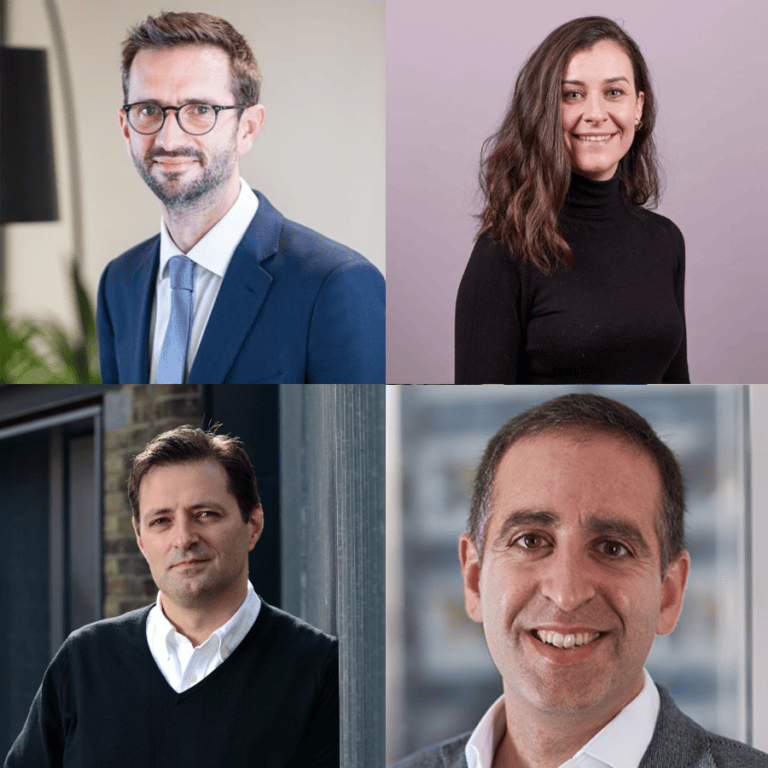UKGBC Innovative Start-Up Forum – What Did We Learn from the Architects?

UKGBC’s third Innovative Start-Up Forum took place on 13th April 2022, where four of our members working in architecture and design joined a group of UKGBC’s Start-Up members for a session on collaboration.
The forum is designed to help address the challenges faced by innovators across the built environment, to encourage peer-to-peer networking, and to connect UKGBC start-up members with corporates. UKGBC is in a unique convening position to support its corporate and start-up members alike in making these connections – and this occasion is a great example of when this works best!
On the 13th April our start-up members were joined by:
- Peter Fisher – Director, Bennetts Associates. Providing insight with a background that combines environmental engineering and architecture.
- Rachel Hoolahan – Architect & Sustainability Coordinator, Orms. An architect by background, involved in research and implementation of circular economy principles on projects.
- Rafael Marks – Principal, Penoyre & Prasad. Experience in the education and healthcare sectors, with an emphasis on innovation and sustainability.
- Phil Obayda – Senior Associate Principal Architect, Skidmore, Owings & Merrill (SOM). Championing the overcoming of innovation inertia to address the current and future challenges of sustainable urban living.
Our panellists attended with the aim of exploring how they can collaborate successfully with start-ups, giving examples of times when this has been challenging, or productive, and providing insight into the sustainability challenges they need solutions to.
Jade Cohen, CPO and Co-founder at Qflow, and a member of the UKGBC Innovative Start-Up Forum’s Advisory Group, reflects on some of the key discussion points.
Where do architects look for innovative solutions or collaboration opportunities with start-ups?
Generally, it was acknowledged that there is no single route to finding the right start-ups and solutions. Peter noted that a two-pronged approach exists:
- “Top-down” and more formal processes – starting with a specific challenge and/or a search for a specific type of solution, then finding the right fit.
Phil described an approach that centres around advertising the big challenges that SOM are facing, to facilitate open-innovation and attract collaborators to spark conversations. Rafael also discussed the value of more formal processes, such as Penoyre & Prasad’s internal “innovation incubators”. These allocate funding twice a year to individuals who pitch for it within the studio, to conduct research into a specific innovation project within their field.
- “Bottom-up”: obtaining a broader understanding of “what’s out there”, unconstrained by a specific solution requirement or problem.
Discussions with colleagues and the wider industry, as well as the use of social media channels, were cited as a common means to discover new conversations and products. Engagement with universities and research institutions to seek out the latest academic thinking was also cited by several of the panel.
Rachel’s concluding thoughts – to never underestimate “the power of word of mouth” within the tight-knit architectural community – were met with wide agreement. Innovative solutions are a strong topic of discussion within and between practices, highlighting the importance of maintaining good relationships and integrity. Rachel noted “we will recommend you if we’ve enjoyed working with you!” and reassured that even if a solution isn’t appropriate for one studio’s project or client, it might be for another’s, and recommendations are often passed on.
What is required of start-ups to enable scaling?
Peter cited that the barriers to upscaling of innovative solutions tend not to be technological or functional, but relate more to issues around warranties, insurance, and supply chain security. For example, roadblocks are often caused by a new construction material lacking certain safety certificates, and innovators not being transparent about this upfront.
However, this is also where opportunity lies. As much as many like to moan about so-called “red tape”, innovators who do their research and have the right documentation and paperwork in place as early as possible can significantly accelerate their solution uptake and scaling.
What can we learn from some good examples of successful collaboration between start-ups and architects?
The key takeaway was “honesty is the best policy”. Returning to Rachel’s earlier point about word of mouth within the architectural community, the importance of start-ups or SME’s being upfront about their scaling potential and implementation timescales is vital – “don’t try and run before you can walk”.
Matchmaking, and patience, was cited as the key to success. Solution providers with a strong proposal, but who are upfront about potential weakness areas, can still be successfully matched to the right client. Phil concurred that success often comes from teaming up with a longer-term vision in mind.
Innovative digital tools that automate design feasibility studies and costs analysis are being increasingly seen – what are some of the barriers around this?
All our panel could cite mixed success with the use of such tools. And some scepticism, especially born off the back of early-stage automated design tools that don’t deliver what they claim. Ultimately it was acknowledged that a very high degree of confidence in the tool of choice was needed to enable automation to take place.
There was also a noticeable challenge associated with speed, when working at design feasibility stages. Many of these solutions have a heavy reliance on a detailed 3D model being available early on, which is generally not the case, as they are only produced in a rudimentary way at this stage. So any solution reliant on this will therefore not produce a meaningful output.
How can we overcome “market inertia” to implementing new innovations in the built environment?
Rachel’s suggestions included, first, acknowledging that this inertia exists. And then that a solution provider can build confidence through giving access to different individuals’ expertise within their team e.g. the sales person, the tech person, the product development lead… This builds trust that the start-ups have the right expertise and speeds up collaboration.
Peter also suggested that if you can “twin track” the trialling of a new solution with a more conventional fallback option in the background, this will give reassurance and reduce the perception of risk. In Peter’s experience, this has led to increased likelihood of innovative solution adoption, reducing early decisions to take conventional options through fear of failure.
Phil described how open dialogue with contractors much earlier, and specifically outside of tender discussions, can lead to more productive conversations and buy-in before options are presented to clients. Barriers are often created at tender stage and are then difficult to overcome.
Rafael reiterated that having the right data associated with new construction materials – such as around provenance, embodied carbon, lifecycle assessment, chemical makeup etc – helps designers understand more about the potential benefits of these products.
Finally, Phil supported all these points by reminding us to look outside of the UK market to address barriers to innovation. He cited Scandinavia’s progress in developing higher timber structures by finding innovative ways to work with insurers to mitigate fire safety issues. We should not be confined to a single jurisdiction to base decisions on ways of innovating.
What are some notable new solutions on the market right now, and what are our architects most excited about?
Solutions ranged from the use of earth blocks to reduce embodied carbon, through to bio-based and hybrid materials that can be used as carbon sinks. These types of solutions were especially called for in structural uses, to replace traditionally carbon intensive concrete and steel.
The key takeaway was a strong demand and excitement for innovation to address whole life carbon, and associated with this, to promote a more circular economy. This included mention of off-site manufacturing, modern methods of construction, and using technology to support the procurement of reused materials.
Jade’s final reflection…
We can see that patience, collaboration and trust are key from both architects and innovators to find the right timing, project, and client appetite to see an innovation through into reality… and scaling opportunities will emerge once the proof is in the pudding!
Want to join our work with us to bring Innovative Start-Ups and Corporate Organisations together? Learn more about UKGBC’s work on solutions and innovation here.
Related
A second-hand materials market: The next chapter in construction’s sustainability story

Join UKGBC’s Circular Economy Forum

Social Value Forum

Navigating the challenges around hard-to-recycle materials

